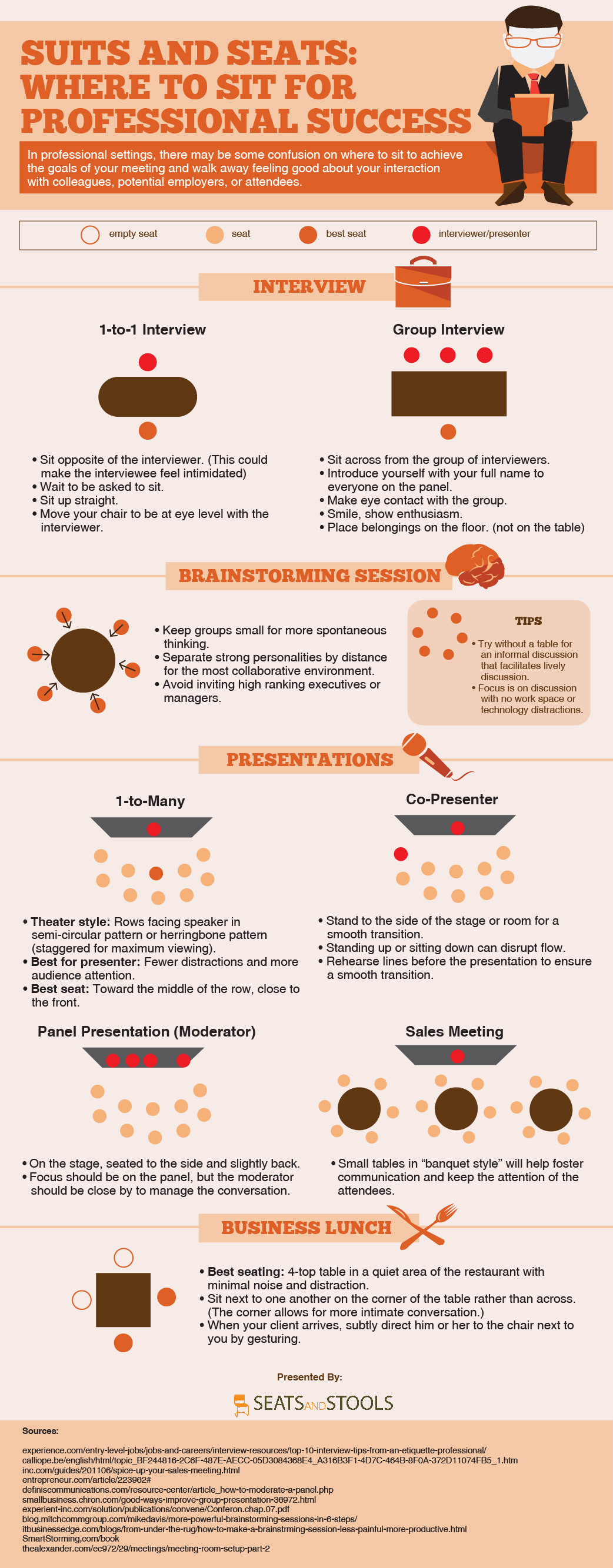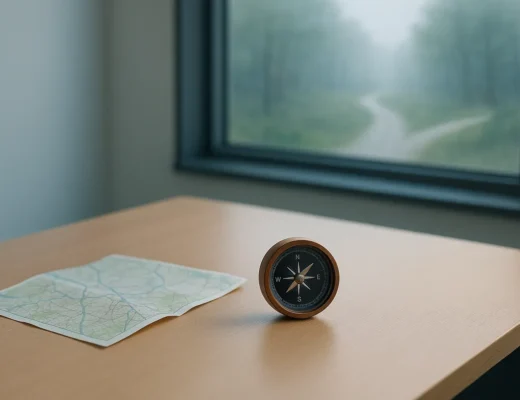If you’ve graduated from college somewhat recently, you probably still remember the delicate art of choosing where to sit in your classes. When you were in a large classroom with hundreds of other people, you could either choose a seat towards the middle or back to remain anonymous, or you could choose a seat closer to the front to avoid being distracted. When you were in a smaller seminar or section that met at a large round table, you had to negotiate how close to sit to the professor or TA (or even risk sitting in a chair at the edge of the room if you came late).
The professional world also has certain unspoken rules about where to sit in different situations, and where you choose to sit can end up making a big difference in the way hiring managers, your employer, and your co-workers think of you. Your seat can also influence your engagement and productivity in a business meeting, which can in turn affect your overall career performance. Even though it seems like a minor thing, your seating position is something you should put some thought into. Let’s take a look at two different professional settings—interviews and meetings—where seating matters.
One-on-One Interview
If you’ve ever been a job seeker (which should be just about everyone reading this), you’ve probably already received endless advice about how important first impressions are when you go in for an interview. You’ve heard that you should be well-dressed, show up on time, make eye contact, smile, and give a firm handshake, but one thing that doesn’t always come up is where you should sit for your interview.
As a general rule, you should wait for your interviewer to invite you to sit, and then take the seat they gesture to. However, if your interviewer doesn’t indicate a particular chair and you have several choices, you should take a seat directly across from him or her and adjust it if necessary so that you are at eye level. This shows confidence and an interest in engaging with the interviewer, two qualities that are important for any job.
Group Interview
When you’re placed in the daunting situation of interviewing with a panel of people, you’ll want to sit directly across from your interviewers, at the middle of the table. Make sure that you’re engaging with all your interviewers by shaking hands, making eye contact, and smiling. You should also introduce yourself to each interviewer individually. If you’ve brought something like a purse or a briefcase with you, carefully place it underneath the table rather than on it.
Brainstorming Meeting
Although it might not seem like as much of a high-stakes situation as a job interview, the seating arrangement during a company brainstorming meeting is still important because it can influence the group’s productivity. Whenever possible, keep brainstorming groups small and sit at a round table so that everyone can be involved—or eliminate the table altogether and circle up the chairs to encourage an informal discussion. If you know that there are several strong personalities in the room, separate them across the circle to encourage the most collaborative environment.
Lunch Meeting
That’s right, your seating arrangement is important even when you’re going out to lunch! If you’re meeting with one other co-worker or supervisor, request a 4-top table in a quiet corner of the restaurant to avoid loud noises and other distractions. Instead of sitting directly across from one another, you and your co-worker should sit next to each other on the corner of the table to allow for more intimate conversation. If the two of you have also invited a client to lunch, politely direct him or her to the chair next to you when he or she arrives.
Professional seating arrangements certainly aren’t something that you should get stressed out about, but being aware of them can help you to put yourself in the best possible light and establish the most conducive work environment.
Matthew Zajechowski is an outreach manager for Digital Third Coast. Connect with him on Twitter or Google+.






